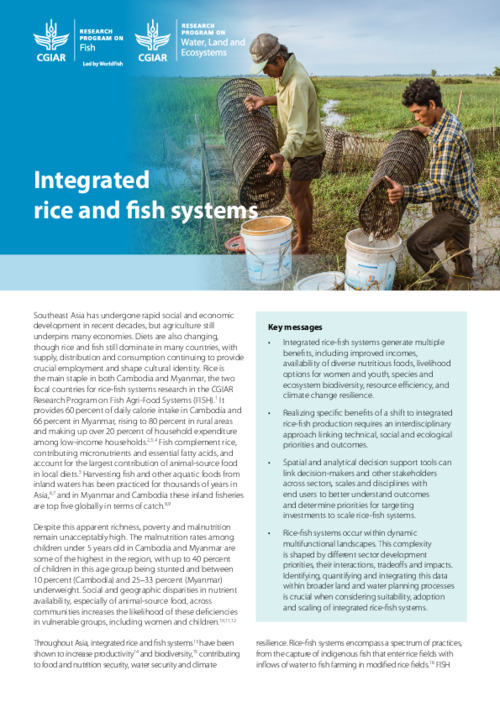Integrated rice and fish systems
Abstract
Integrated rice-fish systems generate multiple benefits, including improved incomes, availability of diverse nutritious foods, livelihood options for women and youth, species and ecosystem biodiversity, resource efficiency, and climate change resilience.
Realizing specific benefits of a shift to integrated rice-fish production requires an interdisciplinary approach linking technical, social and ecological priorities and outcomes.
Spatial and analytical decision support tools can link decision-makers and other stakeholders across sectors, scales and disciplines with end users to better understand outcomes and determine priorities for targeting investments to scale rice-fish systems.
Rice-fish systems occur within dynamic multifunctional landscapes. This complexity is shaped by different sector development priorities, their interactions, tradeoffs and impacts. Identifying, quantifying and integrating this data within broader land and water planning processes is crucial when considering suitability, adoption and scaling of integrated rice-fish systems

